Vraja Mandal
General Information
Earthenware pots are relatively inexpensive and beautiful to look. Clay is somewhat porous. Heat and moisture circulate through the pot during cooking, unlike with metal or enamel-lined pots. The second thing that makes these pots unique is that the clay is alkaline. The clay will interact with acidity in the food, neutralising the pH balance. Something that is naturally very acidic, like a tomato sauce, will take on some natural sweetness when cooked in a clay pot.
Health Benefits of Using Clay Pots
- Clay pots add many essential nutrients like calcium, phosphorus, iron, magnesium and sulphur to food.
- Clay contains all the possible vitamins, even vitamin B12
- Clay is also alkaline and thus, acts neutralized the acidity in the food, which makes it easier for us to digest.
- Cooked food does not have required nutrition’s if the food is cooked in metal utensils. Clay cookware keeps nutrition’s safe while cooking
- The food cooked in Clay pots is much tastier.
Cooking in the Jagannath Temple in Puri

All the cooking pots in the Jagannath temple in Puri are made of clay and are used only one time in cooking.
Srila Prabhupada described:
In the Jagannath temple, the arrangement is that the prasada is cooked every day in a new earthen pot. No old pots are used. Once used they are thrown away. Formerly this was the system in India. There was no washing. Even golden and silver dishes used once were thrown away. In India, amongst strict Hindus, when earthen dishes are used once they are thrown away. Just like you have got paper plates here. You eat off them and throw them away. (Room Conversation, Montreal, July 16, 1968)
The Jagannath Mandir uses the services of around three hundred full-time potters to supply the cooking vessels for the Lord of the Universe. Every day bullock carts full of various types of pots enter the temple from the southern gate, from where the suaras, cooks, take them according to their needs. There are strict rules in force. Only red-coloured pots are used, and once a clay pot has been put on the fire it cannot be reused. New cooking pots are called kuduas. Their thick walls retain heat very well. After cooking and offering, the prasada stays warm for four to five hours.
Govardhana Parikrama Part 3
Cakra Tirtha
This is the spot on the northern bank of Manasi-Ganga where Lord Krsna’s Sudarsana Cakra is embedded. When Krsna was holding Govardhana Hill and protecting the Vrajavasis from the torrents of rain sent by Indra, the Lord could see that the huge deluge of water on the hill might wash down, creating a flood that would drown everyone in its wake. Therefore Krsna released His Sudarsana Cakra. It stayed over the hill for seven days and produced heat equal to seven suns, evaporating large quantities of rainwater and averting a flood. Sudarsana Cakra requested Krsna a place to stay in Vraja, and the Lord told him to stay here at this place, which became celebrated as Cakra-tirtha.
Cakalesvara Mahadeva Mandira
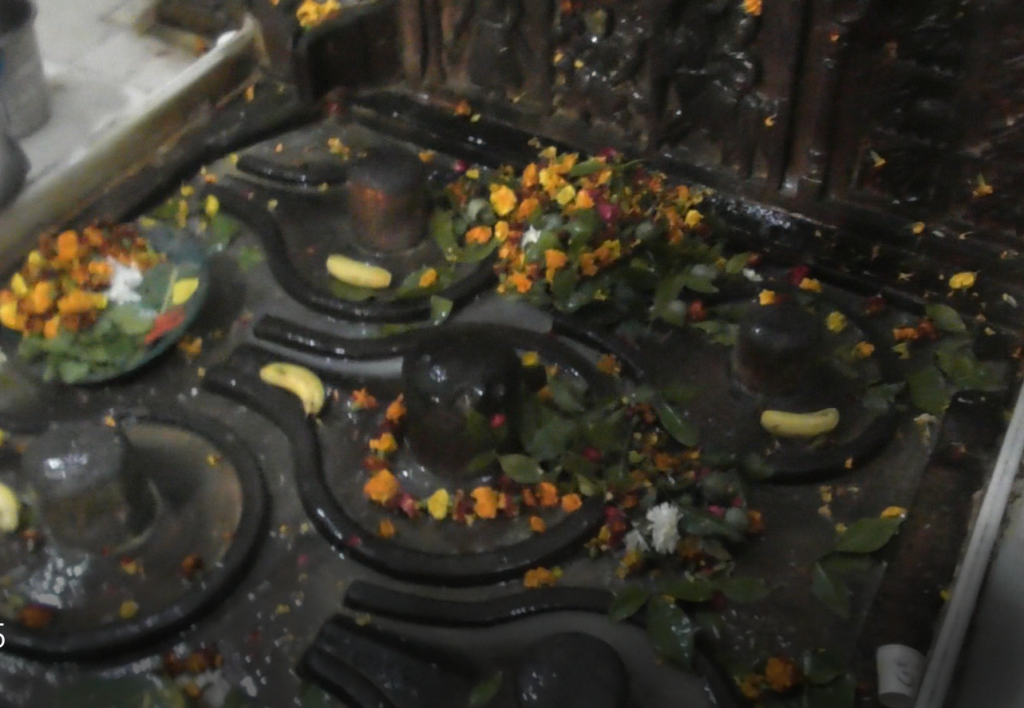
This famous Siva temple contains the Deity (linga) of Cakalesvara Mahadeva and is located at Cakra-Tirtha on the banks of Manasi-Ganga.
Sanatana Gosvami Bhajana Kutira
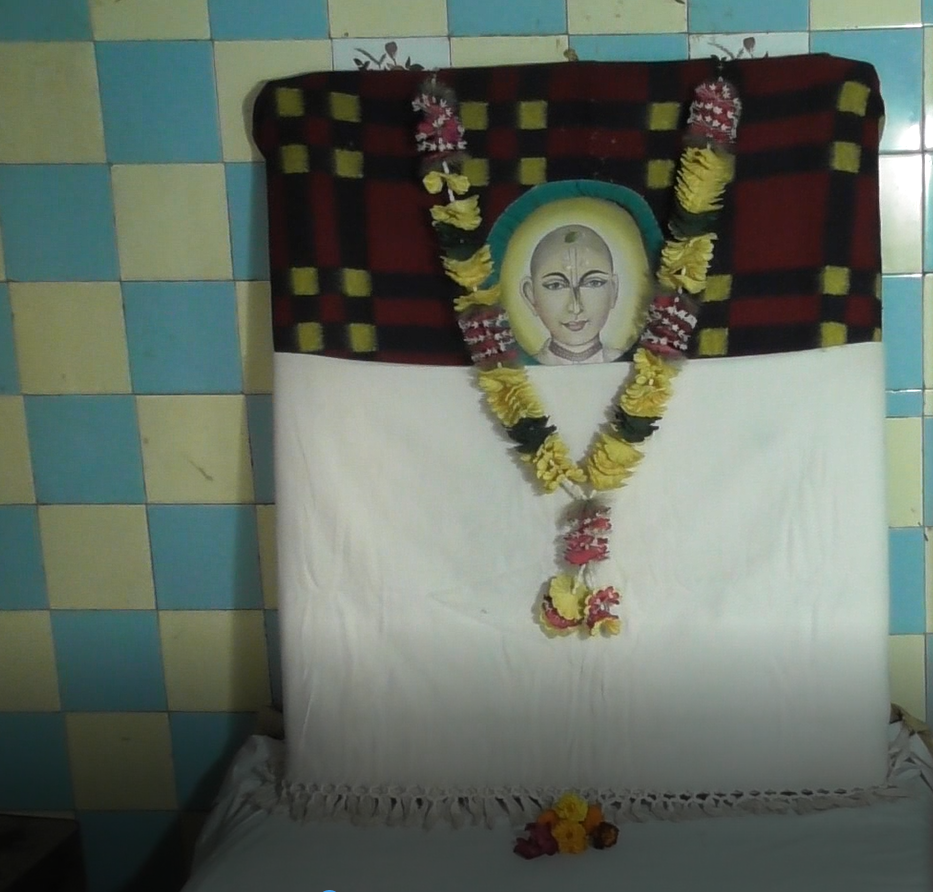
Right next to the Cakalesvara Mahadeva temple is the bhajan kutira of Srila Sanatana Gosvami. During the last years of his life, Sanatana Gosvami came to this place at Cakra-Tirtha and performed bhajan. When Sanatana Gosvami first stayed here, there were so many mosquitoes he decided to move elsewhere. Just at that moment as he was packing up his few belongings, Cakalesvara Mahadeva (Lord Siva) appeared before him in the guise of a brahmana and asked him why he was going away. Sanatana explained that the mosquitoes were a constant source of disturbance and he found it very difficult when he was writing his books.
The brahmana informed Sanatana that from now on the mosquitoes would no longer disturb him and he could continue staying here at Cakra-tirtha. Sanatana stayed and found that he was no longer bothered by the mosquitoes. Local people still say that even today no mosquitoes can be found at Cakra-tirtha.
Even at the advanced age of nearly seventy, Sanatana Gosvami would daily go on parikrama of Govardhana Hill. One day Lord Krsna appeared before Sanatana in the guise of a cowherd boy. Krsna informed Sanatana that as he was now very old it was no longer necessary to go on parikrama around Govardhana Hill. Sanatana replied that he could not give it up as it was part of his daily vows. Seeing that Sanatana was determined to continue, Krsna brought a rock from Govardhana Hill and gave it to Sanatana. Impressed upon the rock was the lotus footprint of Sri Krsna, the hoofprint of a calf, and Krsna’s flute and stick for herding cows. Krsna informed Sanatana that circumambulating the rock seven times would be equal to doing parikrama of Govardhana Hill.
On seeing the wonderful Govardhanasila, Sanatana felt ecstatic love, and tears flowed from his eyes. By the time he regained his composure, the cowherd boy had disappeared. Sanatana then realized that He was none other than Lord Sri Krsna in the guise of a cowherd boy. Sanatana shed even more tears and condemned himself for not being able to recognize his most worshipable Lord.
Sanatana then took the Sila to his bhajan kutira and, following the Lord’s instructions, began to circumambulate this Sila every day. After Sanatana Gosvami’s disappearance, this Govardhana-Sila was kept at the Radha Damodara temple in Vrindavana and can still be seen even today.
Harideva Mandira
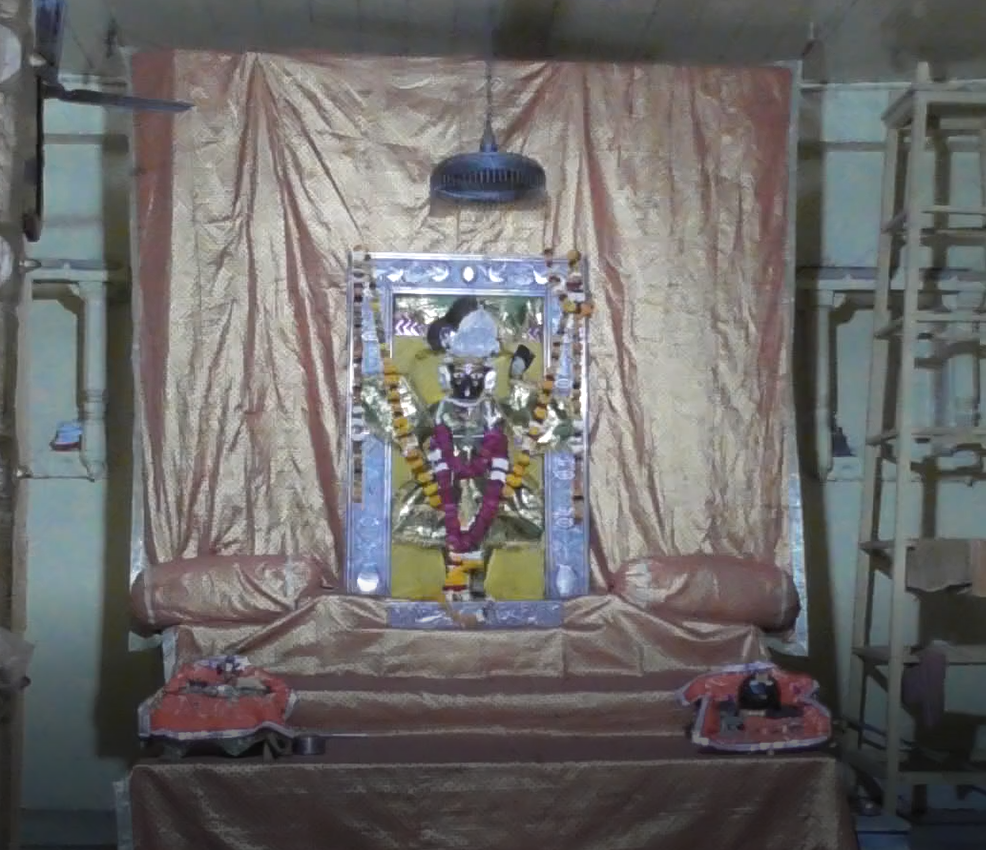
The appearance of Lord Harideva: One day Srimati Radharani and the gopis were waiting for Krsna to come and meet them near Manasi-Ganga. As they were waiting, the gopis started to feel intense separation from Krsna. They then began to chant “Harideva, Harideva, Harideva” over and over again, and their feelings of separation intensified so much so, that it appeared they would give up their lives.
Suddenly a most beautiful Deity of Krsna as a seven-year-old boy appeared there, holding Govardhana Hill in His left hand and His transcendental flute in the other.
The ecstasy Radharani and the gopis felt on seeing that beautiful form knew no bounds. Radharani and the gopis performed all kinds of worship to the Deity and made many wonderful offerings. After the appearance of Govardhana-Nath Harideva, Radharani and the gopis would come here every day to worship this beautiful Deity.
Lord Caitanya Mahaprabhu also visited this ancient temple on His pilgrimage to Vrndavana in 1515. Upon seeing the beautiful Deity of Lord Harideva, Lord Caitanya danced in ecstasy for hours.
In this temple, one can see the Pratibhu-Murti of Lord Harideva.
Anora Grama
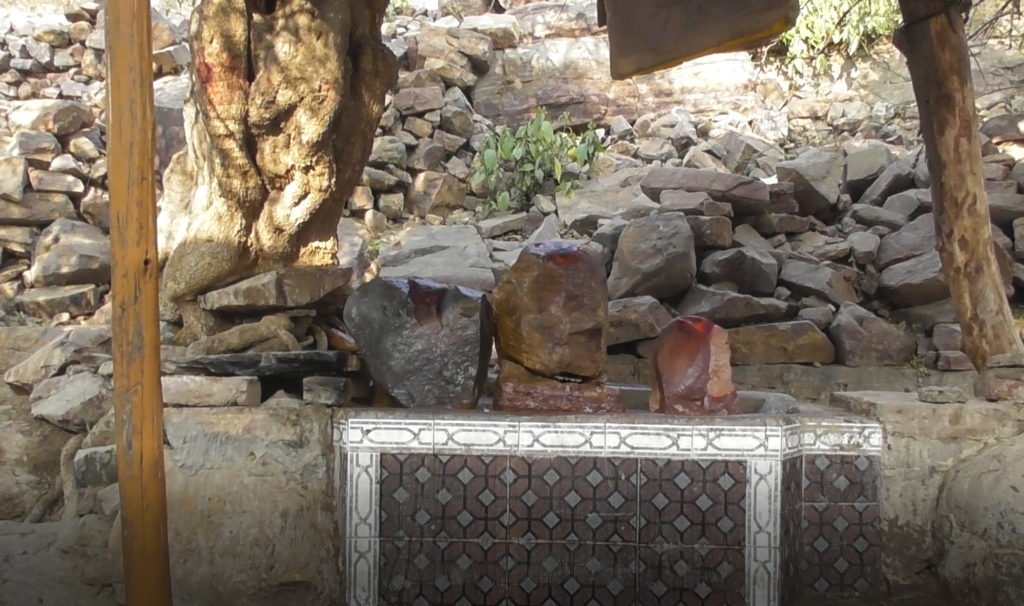
The village of Anora is situated four-kilometre south of the village of Sri Govardhana and one and a half-mile north of the village of Puchari. Here Sri Giriraja repeatedly and loudly called out: Ano Ano (bring it, bring it!) out of great mercy when Sri Nanda and other Vrajavasis devotionally offered four kinds of food- food that is to be licked, chewed, drunk or sucked – in six different flavours. Hence this village is known everywhere as Anora.
Dana Ghati
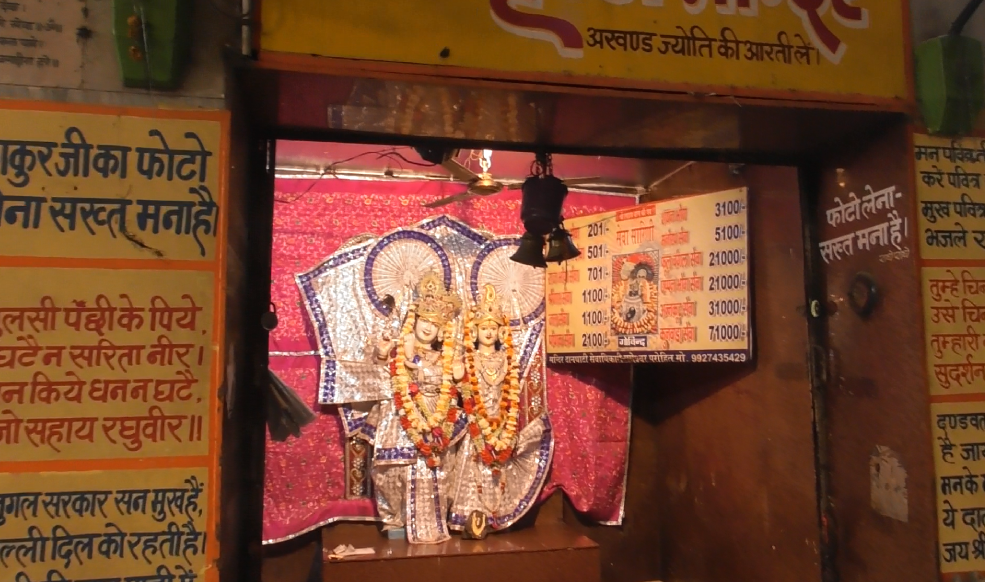
Sri Dana Ghati is situated in the middle of Sri Govardhana village. Here Sri Krsna played the Dana-lila with Srimati Radharani, lovingly quarrelling with Her on the pretext of collecting tax. On the southern side of the Dana Ghati is the temple of Dani Raya. Here Sri Krsna stands in His lovely threefold bending form under the name of Dani Raya.
His Holiness Bhakti Purusottam Swami explains this beautiful pastime “Krsna Collects Tax From Srimati Radharani”
One day Sri Krsna, along with His sakhas, was grazing cows in the forest near a pond. He saw one very beautiful golden lotus in the pond, surrounded by bumble bees who were sucking the nectar from the flower. This fully-bloomed lotus reminded Govinda of the lotus face of His beloved Radharani. Sri Krsna became impatient and told His cowherd friends, “You all play here for some time on the bank of this pond. I am going with Subala for a while.”
Krsna went with Subala to the place called Danaghat and said to him, “Sakhe! How can I get darsana of My beloved Radhika?”
Subala replied, “I have heard that this morning Radharani came from Yavat to Vrndavana, to the house of Her father. She will definitely come here along with Her sakhis on the pretext of performing Surya puja. If You wait for a moment here then You can meet with Her.”
In the meantime, Radharani and Her sakhis came to Danaghat with all paraphernalia for worshipping Surya. When Radharani saw Her dear Krsna resting under a kadamba tree, She told Lalita, “Sakhi! How can we go through this way? Sri Hari will block the road. Let us go through some other way.”
Lalita said, “You all come with me. Let us see what Krsna can do.” All the sakhis started to walk forward, keeping Radharani in the middle. When Krsna saw this He asked them, “Where are you going? What are you carrying? I am sitting here as the tax collector of the king. Can’t you see Me? You all have to pay tax. Don’t be so proud! I am telling you nicely to pay a small tax here, and then go.”
Hearing this, all the sakhis laughed and continued to walk. Immediately Krsna ran in front of them and blocked their path. Lalita asked, “What tax are You asking? Why did You stop us on your path? You must give up this cleverness. If You talk more then we will disclose Your activities and qualities in public!”
After hearing this form Lalita, Krsna spoke with a very gentle and sweet voice, “Listen Lalita! You do not know Me. I have been appointed by the order of King Kandarpa to collect tax. If you do not follow My order then punishment is inevitable. That is why you should now behave properly. There is no need of talk. Just pay the tax and happily go from here. That’s it.”
Lalita said, “Kanai! You know so many clever words. We are helpless girls. What can we say to You? If You think we are bypassing the order of the king then You do whatever You can do.”
After hearing this from Lalita; Visakha said, “Listen, sakhi! What power has He here? What claim has He here? He says He is the tax collector of Kandarpa-raja. Wherever King Kandarpa lives, he has power there. This forest belongs to Radhika. We are Her sakhis. What can Krsna do here?”
Krsna said, “Visakhe! Why are you so proud? Kandarpa has claim over everyone, yet all you sakhis avoid paying the tax and wander all over the forest in an uncontrolled manner. That is why Kamadeva has become angry and sent Me here. This is why the road has been blocked. If you do not pay the tax then I will have to take you to the king.”
Visakha said, “What can Your king do to us? Just see in front of us, Vrndavanesvari is present. We know the power of your Kandarpa-raja very well. All his pride has been cut by the glance of Radharani. Not only that, but whenever your Kandarpa-raja hears the name of Radharani he runs away. You are just his follower, a servant.”
Visakha started to walk away, taking Radharani with her. Then Krsna again moved in front of them and said, “I know very well that you would like to see Me punished by the king. Then listen, sakhis! I am telling you the truth: You cannot escape Me in any way. No tricks will work here.” With great pride, Lalita said, “Oh, Murari! What tax do You want?” Krsna replied, “Lalite! You are hiding the full bloom of your youth under your cloth. You will have to pay tax for this material.”
Hearing Krsna speaking like this, all the sakhis laughed and said, “A tax collector who asks for a tax on material that conceals our youth! We have never heard such a thing! Now we understand why You have become a tax collector and wander all over the forest!”
Amongst themselves, the gopis said, “O Sakhis! Let us go for worshipping Surya Deva. There is no need for us to discuss anything with Him.”
When Krsna saw the sakhis starting to walk away again, He stopped them and said, “Listen to Me. Your sakhi Radha has stolen the jewel of My mind (mana-ratna). Due to the absence of that mana-ratna, My life has become unbearable. You should tell Her to give Me back this mana-ratna immediately.”
In reply Lalita said, “Krsna! How can You speak so many lies? My sakhi is very sober. When did She steal Your mana-ratna? You have stolen the minds of all young girls of Gokula. Due to the loss of their minds they have been searching for You throughout the different forests. You do not see Your fault in giving a bad name to others.”
Krsna said, “Lalite! I do not speak lies. Ask Radharani. If She will not speak, then listen to Me. One day when Visakha and I quarrelled, all you sakhis stole my mind and since then Radhika has kept it under Her breast. If you do not believe My words then let Me show you.”
Saying this, Krsna walked towards Radharani, raising His hand to touch Her. At that time the sakhis left the kunja.
Sri Sankarsan Kund
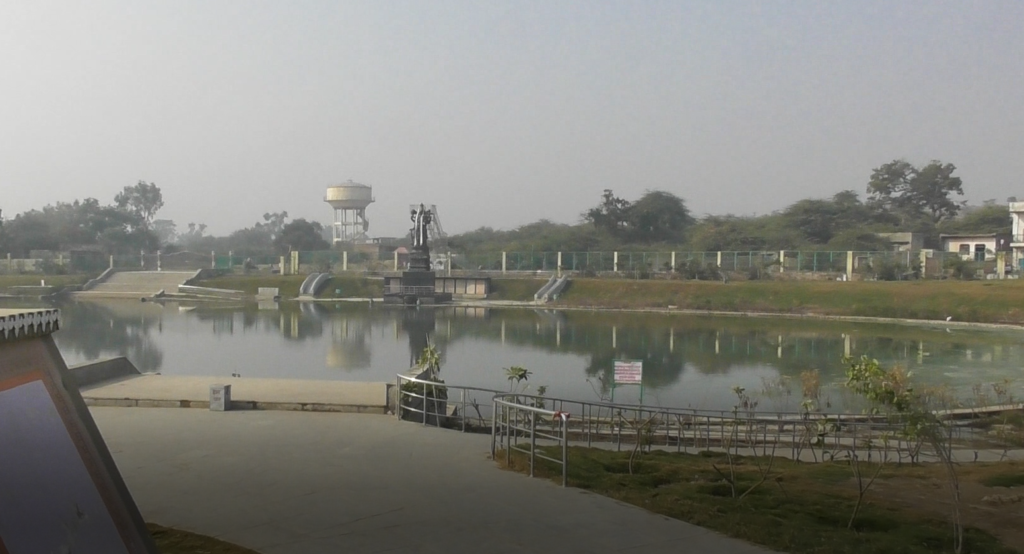
Sri Sankarsan Kund is situated east of the village of Sri Anora. On the northern bank of the kund is Sri Sankarsan dev. By bathing in this kund one is very swiftly freed from all great sins.
Sri Govinda Kund
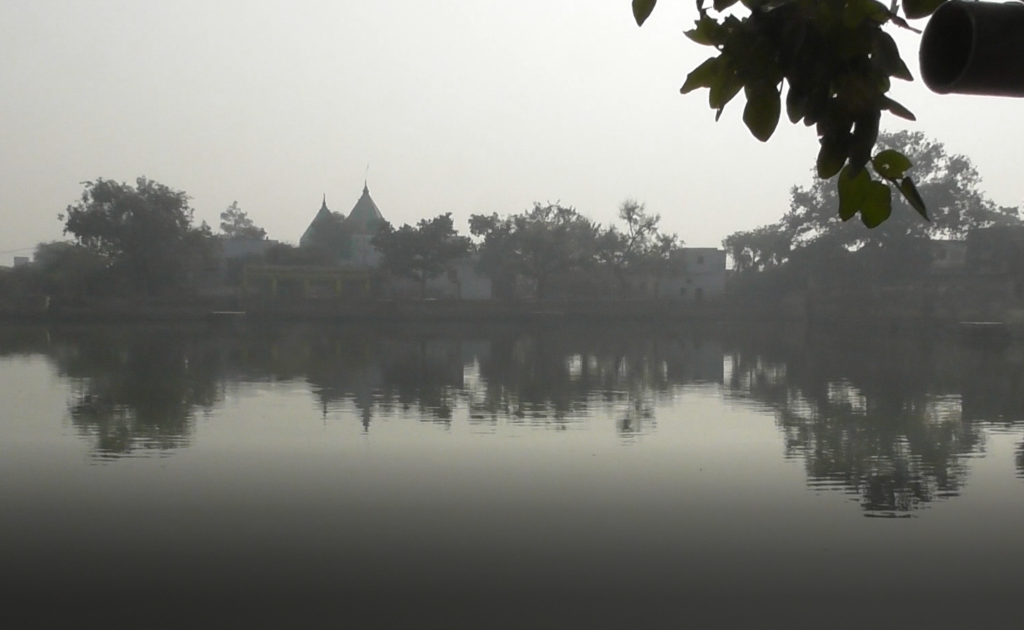
Sri Govinda Kund is situated south of Sri Anora Grama and close to Sri Giriraja. At this place Devaraja Indra had Sri Krsna bathed by a Surabhi-cow and with water from different holy places in order to apologise for the offence he committed and had Him named Sri Govinda. On the eastern bank of this kunda is the temple of Sri Govindaji, in the south-western corner is the Sri Nathaji Mandir. On the northern bank is the Sri Madhavandripuri Bhajan Kutir, on the southern bank is the Sri Madana Mohana Mandir and on the western bank is Sri Giriraja Temple.
Sri Dauji Mandir (Lok Lok Dauji)
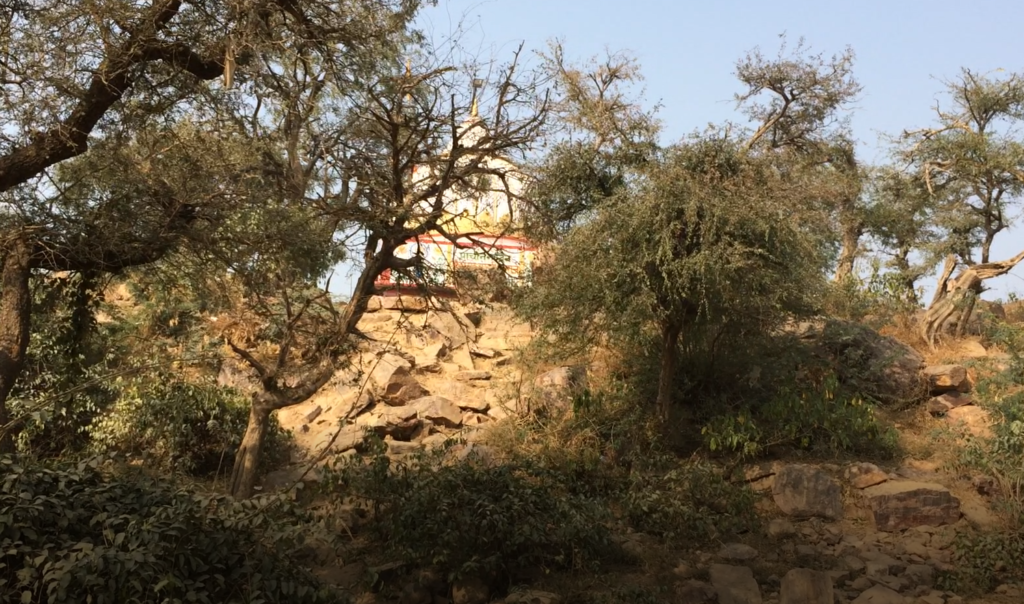
Sri Dauji Mandir is situated one kilometre north of Sri Puchari Grama. Inside the temple is a Srngara Sila and a footprint of Sri Krsna when He was seven years old. Vaisnavas do not go to this temple because it is on top of Sri Giriraja, rather they offer prostrated obeisances to the temple from next to the hill. It is said that Sri Krsna stood at this place when He lifted Govardhana Hill.
You can also see Lord Krishna’s Mukut mark on the Sila.
Sri Apsara Kund, NavalaKund, Sri Nrsimhadeva temple & Cave of Sri Raghava Pandita
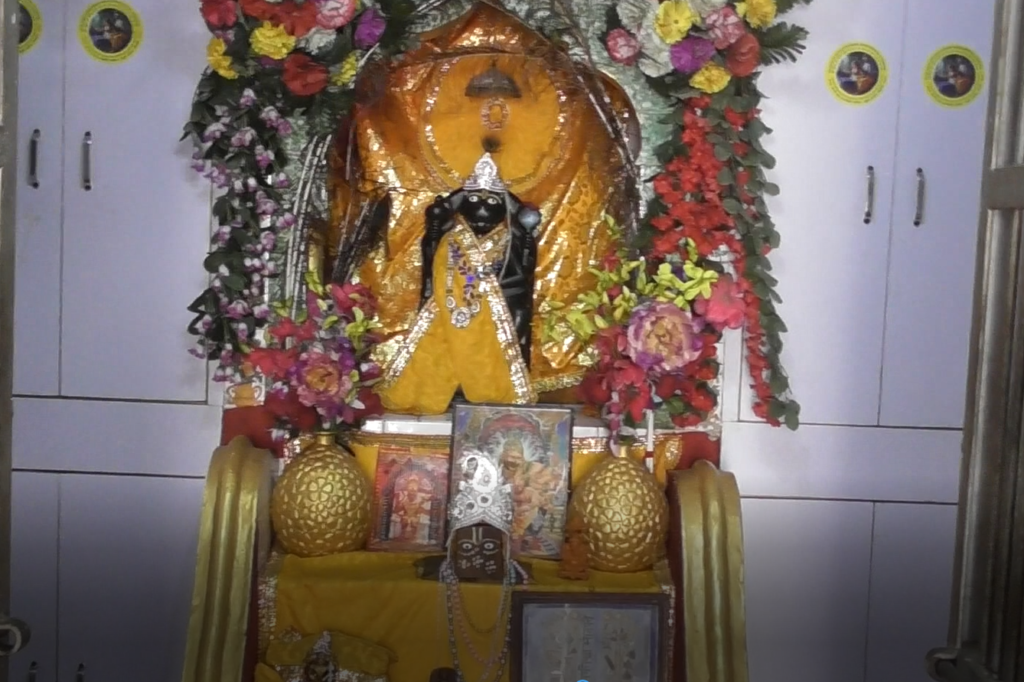
North of the village of Puchari are these two kundas. The ancient name of Sri Navala Kund is Sri Puccha kund, but the Queen of Bharatapura, Srimati Navala Rani, had this kund cleaned, so now it is called Sri Navala Kund. Simply by bathing in this kund a human being attains liberation. On the eastern side of the kund is the Sri Nrsimhadeva Temple and on the right side is Sri Apsara Kund. In Sri Apsara Kund the Apsaras and other goddesses always bathe. Simply by bathing here a human being attains the result of a Rajasuya or an Asvamedha-sacrifice. On the western side of this kund is the temple of Sri Apsara ABihari and the temple of Sri Lothaji. Here Sri Krsna’s dear friend Sri Lothaji is immersed in the bliss of bhajan. On the northern side of Apsara kund is the cave of Sri Raghava Pandita. When Sri Raghava Pandita wandered through Sri Vrindavana he performed bhajan in this cave.
To be continued in Govardhana Parikrama Part 4, Vraja Mandal, UP, India